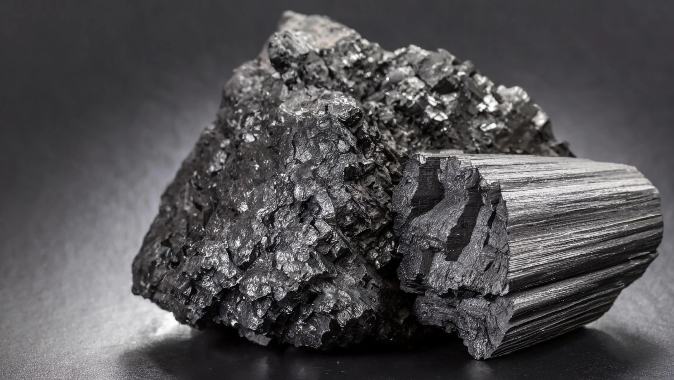
What Is Impregnated Carbon Graphite?
Impregnated carbon graphite is a specialized form of carbon graphite that has been treated with a secondary material, typically a resin or metal, to enhance its properties for specific applications. This impregnation process alters the physical and chemical characteristics of the graphite, resulting in a material with improved characteristics such as strength, conductivity, or resistance to chemicals and high temperatures.
Regular carbon graphite possesses a porous structure due to the arrangement of its carbon atoms, which allows for gas or liquid permeation. In contrast, impregnated carbon graphite undergoes impregnation to either reduce or close off this porosity, effectively altering its properties to achieve desired enhancements.
By impregnating carbon graphite, manufacturers can tailor its properties to suit specific application requirements, offering a versatile solution for a wide range of industries. In the following sections, we will delve deeper into the benefits, limitations, and optimal scenarios for utilizing impregnated carbon graphite, as well as explore the intricacies of the impregnation process.
Advantages and Disadvantages of Using Impregnated Carbon Graphite
Impregnated carbon graphite offers a plethora of advantages, making it a sought-after material for a wide range of applications. However, it's important to also consider potential limitations to ensure informed decision-making. Let's explore both sides of the coin:
Benefits of Carbon Graphite Impregnation
Impregnated carbon graphite presents several key advantages:
- Enhanced Mechanical Strength: Through impregnation, carbon graphite's mechanical strength and durability can be significantly enhanced, making it suitable for demanding structural applications where robustness is paramount.
- Improved Oxidation Resistance: Impregnating carbon graphite with appropriate materials can enhance its resistance to oxidation, prolonging its service life in high-temperature environments where exposure to oxygen is a concern.
- Tailored Electrical Conductivity: By impregnating with specific agents, the electrical conductivity of carbon graphite can be precisely tailored to meet the requirements of various electrical applications, such as electrodes in batteries or electrical contacts.
- Enhanced Thermal Conductivity: Impregnation with thermally conductive materials can boost carbon graphite's thermal conductivity, making it more effective for applications requiring efficient heat dissipation or thermal management.
- Customizable Properties: Impregnation allows for the customization of carbon graphite properties to suit specific application needs, providing versatility and adaptability across diverse industries and environments.
Limitations of Carbon Graphite Impregnation
While impregnated carbon graphite offers numerous benefits, it's essential to acknowledge potential limitations:
- Cost Considerations: The impregnation process can incur additional manufacturing costs, potentially making impregnated carbon graphite more expensive compared to untreated graphite or alternative materials.
- Material Compatibility: Certain impregnating agents may not be compatible with the intended application environment, leading to potential degradation or reduced performance over time.
- Complexity of Process: Impregnation processes can be complex and require precise control to achieve desired outcomes, posing challenges in terms of consistency and scalability.
- Dimensional Stability: Changes in dimensional stability or shrinkage may occur as a result of impregnation, which could impact the accuracy or precision of components in certain applications.
- Environmental Considerations: Depending on the impregnating agents used, there may be environmental concerns related to their disposal or potential release of volatile compounds during processing.
By weighing these advantages and limitations, stakeholders can make informed decisions regarding the utilization of impregnated carbon graphite, ensuring optimal performance and cost-effectiveness in their applications.

When to Use Impregnated Carbon Graphite
Determining when to use impregnated carbon graphite hinges on understanding its unique properties and how they align with specific application requirements. Impregnated carbon graphite shines in scenarios where standard graphite falls short or where enhanced performance is paramount.
One common application is in environments with high temperatures and oxidative conditions, such as aerospace components or industrial furnace linings. Impregnated carbon graphite's improved oxidation resistance makes it an ideal choice for these demanding settings, where prolonged exposure to heat and oxygen can degrade traditional graphite materials.
Moreover, impregnated carbon graphite finds utility in applications requiring tailored electrical or thermal conductivity. Whether as electrodes in high-performance batteries, thermal management solutions in electronics, or precision electrical contacts, impregnated carbon graphite's customizable properties enable it to excel where standard graphite may lack the necessary conductivity levels or durability.
In essence, when seeking a material that offers enhanced strength, oxidation resistance, electrical or thermal conductivity, or customized properties, impregnated carbon graphite emerges as a compelling choice, elevating performance and reliability in a diverse array of applications.
Coatings vs. Impregnation
Coatings and impregnation are two distinct methods used to modify the properties of materials like carbon graphite, each offering unique advantages and applications. Let's delve into the differences between coatings and impregnation:
Coatings
Coatings involve applying a layer of material onto the surface of a substrate to alter its properties. Examples include Teflon, silicon carbide, diamond-like coatings, and diamond coatings. Here's how coatings compare to impregnation:
- Surface Modification: Coatings primarily modify the surface properties of a material, providing benefits such as improved wear resistance, reduced friction, and enhanced chemical resistance. For instance, Teflon coatings are used to seal the surface of carbon graphite parts, ensuring chemical resistance and reducing friction.
- Targeted Properties: Coatings are applied selectively to achieve specific properties, such as hardness, low friction, or corrosion resistance. However, they do not significantly alter the bulk properties of the substrate material.
- Substrate Compatibility: Coatings are typically applied to a wide range of substrate materials, including metals, plastics, and ceramics. However, certain coatings may require specific substrate properties for optimal adhesion and performance.
Impregnation
Impregnation involves saturating the porous structure of a material with another substance to enhance its properties. In the case of carbon graphite, impregnation can involve infusing resins, metals, or other materials into the porous structure. Here's how impregnation differs from coatings:
- Bulk Property Enhancement: Impregnation modifies the bulk properties of the material by filling its pores with another substance. This can result in improvements such as increased strength, enhanced thermal or electrical conductivity, and improved resistance to oxidation or corrosion.
- Versatility: Impregnation offers versatility in tailoring material properties to suit specific application requirements. By selecting different impregnating agents and processes, a wide range of properties can be achieved, making impregnated materials suitable for diverse applications.
- Compatibility with Carbon Graphite: Impregnated carbon graphite is specifically designed to enhance the properties of carbon graphite materials. While coatings such as silicon carbide or diamond-like coatings are not typically applied to carbon graphite due to its inherent low coefficient of friction and unique properties, impregnation offers a tailored approach to enhance its performance in various applications.
Coatings and impregnation are distinct methods for modifying material properties, with coatings primarily focusing on surface modification and impregnation enhancing bulk properties. Understanding the differences between these methods allows for informed decision-making when selecting the most suitable approach for a particular application.
The Impregnation Process
The impregnation process is a sophisticated method used to enhance the properties of materials like carbon graphite by saturating their porous structure with another substance. This process involves several key steps, each crucial for achieving desired outcomes:
1. Preparation:
The impregnation process begins with the preparation of the carbon graphite material. This may involve cleaning the surface to remove any contaminants and ensuring uniformity in porosity across the material. Proper preparation ensures optimal impregnation and bonding between the impregnating agent and the substrate material.
2. Selection of Impregnating Agent:
Choosing the right impregnating agent is paramount to achieving the desired properties in the impregnated material. Impregnating agents can vary widely and may include resins, metals, polymers, or other substances, depending on the specific application requirements. Factors such as desired properties, compatibility with the substrate material, and process parameters influence the selection of the impregnating agent.
3. Impregnation Method:
There are several methods for impregnating carbon graphite, each offering unique advantages and suited to different applications. Common impregnation methods include vacuum impregnation, pressure impregnation, and dip impregnation:
> Vacuum Impregnation: In vacuum impregnation, the carbon graphite material is placed in a vacuum chamber, and the impregnating agent is introduced under vacuum to ensure thorough penetration into the material's pores.
> Pressure Impregnation: Pressure impregnation involves applying pressure to force the impregnating agent into the carbon graphite material's pores. This method is suitable for achieving deeper impregnation and is often used for larger or more complex parts.
> Dip Impregnation: Dip impregnation entails immersing the carbon graphite material in a bath of the impregnating agent. Capillary action draws the impregnating agent into the material's pores, ensuring uniform saturation.
4. Impregnation Process:
Once the impregnating agent is applied, the impregnation process commences. The duration of the impregnation process varies depending on factors such as the desired depth of impregnation, the properties of the impregnating agent, and the chosen impregnation method. Proper control of process parameters is essential to ensure uniform impregnation and consistent material properties.
5. Curing or Solidification:
After impregnation, the impregnated carbon graphite undergoes a curing or solidification process to ensure that the impregnating agent sets and bonds effectively with the substrate material. This may involve heating, cooling, or chemical reactions, depending on the nature of the impregnating agent.
6. Post-Processing:
Following curing or solidification, post-processing steps such as machining, surface finishing, or quality control inspections may be performed to ensure the impregnated carbon graphite meets the specified standards and dimensions. Proper post-processing is crucial for achieving the desired final properties and surface characteristics of the impregnated material.
Common Impregnation Materials
In the process of impregnating carbon graphite, a diverse array of materials is utilized to enhance its properties and tailor it for specific applications. These impregnation materials range from resins to molten metals and ceramics, each offering unique characteristics and benefits. Let's explore some of the common impregnation materials used:
Various Resins
Resins such as epoxy, phenolic, polyester, and polyurethane are commonly used as impregnating agents for carbon graphite. These resins offer excellent adhesion, chemical resistance, and durability, making them suitable for various applications ranging from structural reinforcement to corrosion protection.
Inorganic Salts
Inorganic salts, including borates and phosphates, are used as impregnating agents to enhance the properties of carbon graphite. These salts can provide corrosion resistance, flame retardancy, and thermal stability, making them ideal for applications in harsh environments.
Molten Metals
Molten metals such as antimony, babbitt, bronze, copper, and silver are employed to impregnate carbon graphite, offering improved conductivity, strength, and thermal properties. These metals penetrate the pores of the graphite, filling voids and reinforcing the material, thereby enhancing its mechanical and electrical performance.
Molten Ceramic
Molten ceramic materials are used to impregnate carbon graphite, providing enhanced thermal conductivity, wear resistance, and thermal stability. Ceramic impregnation can improve the performance of carbon graphite in high-temperature applications, where thermal management and durability are critical.
Antimony
Antimony is sometimes used as an impregnating material for carbon graphite. Antimony impregnation can improve the mechanical properties of carbon graphite, enhancing its strength and wear resistance. Additionally, antimony impregnation can also enhance the thermal conductivity of carbon graphite, making it suitable for applications requiring efficient heat dissipation.
Babbitt
Babbitt, a soft metal alloy typically consisting of tin, copper, and antimony, is utilized for impregnating carbon graphite in applications where friction reduction and wear resistance are critical. Babbitt impregnation forms a lubricating layer on the surface of carbon graphite, reducing friction and extending the lifespan of components such as bearings and bushings.
Bronze
Bronze impregnation involves saturating carbon graphite with molten bronze, which can enhance its mechanical properties and wear resistance. Bronze impregnated carbon graphite is commonly used in applications requiring high strength, such as bushings, bearings, and mechanical seals.
Copper
Copper impregnation is employed to enhance the electrical conductivity of carbon graphite. By saturating carbon graphite with molten copper, its conductivity is significantly improved, making it suitable for applications such as electrical contacts, electrodes, and current-carrying components.
Silver
Silver impregnation offers excellent electrical conductivity and corrosion resistance. Impregnating carbon graphite with silver enhances its electrical properties, making it ideal for applications requiring high conductivity and reliability, such as electrical contacts, brushes, and slip rings.
Each impregnation material offers distinct advantages and is chosen based on the desired properties and performance requirements of the impregnated carbon graphite. Whether seeking improved mechanical strength, electrical conductivity, corrosion resistance, or thermal stability, the selection of impregnation materials plays a crucial role in tailoring carbon graphite for specific applications.
FAQs about Carbon Graphite Impregnation
Impregnated carbon graphite is primarily used in applications that require enhanced properties such as increased strength, improved wear resistance, and greater chemical resistance. Common use cases include:
- Seals and Bearings: Used in pumps and compressors to handle liquids and gases without contamination.
- Electrical Components: Employed in brushes for electric motors and generators due to its excellent conductivity and low friction.
- High-Temperature Environments: Utilized in furnace parts and heat exchangers where standard carbon graphite would degrade.
- Corrosive Environments: Suitable for chemical industries where parts are exposed to aggressive chemicals.
Determining if your application requires impregnated carbon graphite depends on several factors:
- Operating Environment: If your application involves abrasive conditions, high temperatures, or corrosive chemicals, impregnated carbon graphite can offer enhanced durability and resistance.
- Performance Requirements: For applications requiring high mechanical strength, low friction, or superior sealing capabilities, impregnated carbon graphite is often beneficial.
- Lifecycle Cost: Although more expensive upfront, impregnated carbon graphite can reduce maintenance costs and downtime, making it a cost-effective solution in demanding settings.
To make a well-informed decision, consider the specific conditions and requirements of your application or consult with a materials expert or engineer specialized in carbon graphite solutions.
Working with the Right Carbon Graphite Manufacturer
Choosing the right carbon graphite manufacturer is paramount to achieving success in your applications. From impregnated carbon graphite for high-stakes aerospace components to specialized materials for critical electrical contacts, the expertise and capabilities of your manufacturer play a crucial role in delivering optimal performance and reliability.
At St. Marys Carbon, we understand the intricate nuances of carbon graphite and the impregnation process. With decades of experience and a commitment to innovation, we stand apart as a leader in the industry. What sets us apart is our ability to develop and mix our own carbon grades, giving us unparalleled flexibility to customize products to meet the unique needs of your industry and application.
With hundreds of proprietary carbon graphite grades at our disposal, we can tailor solutions to your exact specifications. Whether you require enhanced mechanical strength, improved thermal conductivity, or superior corrosion resistance, we have the expertise and resources to develop custom impregnated carbon graphite grades that exceed your expectations.
When you partner with St. Marys Carbon, you gain more than just a supplier – you gain a trusted collaborator dedicated to your success. Our team of experts will work closely with you to understand your requirements, address your challenges, and deliver solutions that propel your projects forward.
Make the smart choice for your carbon graphite needs. Contact St. Marys Carbon today and experience the difference our expertise and dedication can make in your applications. Let us help you unlock the full potential of impregnated carbon graphite and take your projects to new heights.




